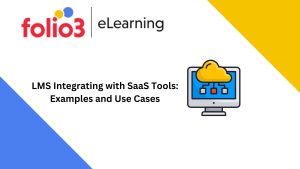
Executive Summary
While implementing online training, learning management systems are promoted as a means to save time and money. Does this hold water at the beginning of the process, even though it is true at later stages? The article will help you understand the LMS learning curve along with 6 guidelines for calculating the time workers must actually learn the new system.
Understanding A New System With The LMS Learning Curve
To increase ROI and satisfy employee expectations, you’re prepared to make an investment in a new learning management system. For the deployment and monitoring of online training programs, your L&D team requires a more powerful platform. Whereas your corporate learners require a more user-friendly solution so they can access online training resources without encountering any technical difficulties. The following advice will help you determine how long it will take your staff to learn the new system and progress through the LMS learning curve.

6 Tips On Calculating The Time To Master The New System
- Tip # 1 – Automate your training
It’s simpler to deal with the “learner” side of things. LMS administrators should beta-test online courses as they are being created. By testing, flaws, knowledge gaps, and potential learning obstacles are found. Real-time testing of course length is also done. It’s customary in the online world to say how long an item will take to read.
It’s not a rule; rather, it’s a suggestion to assist online students plan their time effectively. A simple stopwatch can be used by the creator of the online training course to determine how long it took them to complete each unit. Use several testers to corroborate this method by repeating it three or four times for each tester.
- Tip # 2 – Reliable reviews Reliance
Online critiques of the UX are likely to exist if the system has been in use for some time. If the program takes longer to learn than anticipated, users will say it and explain why. To discover more about the LMS learning curve, you could also enquire online. Also, you can look for reviews to assess the product’s sticking points and decide if they apply to you. As an illustration, a reviewer in the same business pointed out that the system lacked flexibility and was less than intuitive.
- Tip # 3 – Learners Vs. Teachers
The equation involving your LMS has two sides. The LMS performs a variety of jobs, including management duties, personnel supervision, and online training activities. Moreover, it can be used to create online training programs.
A well-designed LMS will provide online training onboarding resources for both online instructors and trainees. It might be a slide display or a video. The time frame will also vary because the knowledge needed depends on business positions and usage goals. Some providers even offer one-on-one assistance to guide you through typical difficulties and maximize functionality.
- Tip # 4 – Lessons Vs. Features
Administrators must investigate the system to learn what they are capable of and what they are not. They will need to put all the features to the test and practice using them until they are automatic. The best course of action is to delegate responsibility to one person and take care of everything else. Offer them a “free week” to experiment with and become acquainted with the LMS. Check in with them at the conclusion of the week.
They’ll let you know if they need extra time, and they’ll be able to provide other administrators with a more accurate time estimate. The “guinea pig” can instruct their coworkers on administrative duties once they are comfortable with the system. Due to the presence of an “expert” who can provide direction and expediency, this supplementary training will likely take less time.
- Tip # 5 – Allow Implementation Of The Newly Acquired Knowledge
If you give me six hours to cut down a tree, the first four will be spent sharpening the axe. While Abraham Lincoln’s famous quote emphasizes the importance of preparation and acquiring new abilities to create better results, extended learning underlines the necessity of using new knowledge as you go. This has an experiential learning feel to it. In other words, the efficacy of the learning you provide depends on allowing employees the time and room to change, as well as the freedom to try out ideas and make mistakes in practical application.
- Tip # 6 – Reflect On The Content
When estimating the LMS learning curve, it’s important to take into account the material and how soon employees will adapt to the new delivery method in addition to the system itself. How much audio and video content does your online course contain? These formats aren’t exactly suited to speeding up. Add the time of audio-visual content to your calculation of the length of the online training. After that, count how long it will take you to read each part of the text. Because it’s impossible to predict how long trainees will gaze at a picture, visuals are more difficult to assess. Give it a few seconds for a straightforward image and up to 30 seconds for a more complicated one.
Conclusion
Although everyone trains at a different speed and in different ways, giving estimations is a useful tool. For self-directed courses, it can be even more important. The same principle holds true while getting used to the new online training system. The LMS development company and the online learners are the two learning layers in your LMS. Give your designated LMS Head a week off from their regular responsibilities so they may concentrate on the LMS. To help you better understand the LMS learning curve and schedule, they can create a timing estimate.

FAQs
The idea of becoming accustomed to the new career’s surroundings is referred to as the “learning curve” at a new job. It is the correlation between the amount of experience you pick up on the job and how your competency grows.









